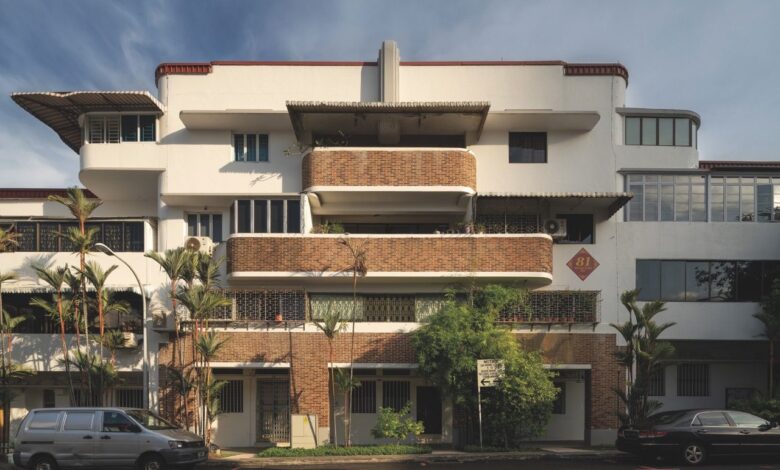Art Deco architecture in Southeast Asia: Heritage and preservation

From Kuala Lumpur’s Central Market to Singapore’s Tiong Bahru, discover how Malaysia and Singapore are preserving their Art Deco architectural heritage
When the morning sun strikes the facade of Kuala Lumpur’s Central Market, the building’s streamlined corners and geometric motifs cast dramatic shadows across its pale blue walls. Once a hub for wet market traders, today it stands as a monument to the preservation of Malaysian heritage buildings.
Built in 1937, the market is among the finest examples of Art Deco architecture in Southeast Asia, an enduring remnant of a style that flourished across British Malaya, leaving an indelible mark on the region’s urban landscape.
But while Central Market survived the bulldozers, many of its architectural siblings weren’t so fortunate. “Since the 1980s, a number of beautiful examples of Southeast Asian Art Deco have been lost to development, most notably an array of iconic old cinemas such as The Pavilion and Cathay theatres in Bukit Bintang, as well as the Lido in Brickfields,” says Lim Wei-Ling, president of Badan Warisan Malaysia (BWM), the country’s heritage trust.
In the 1930s, as Malaysian cities grew wealthy from rubber and tin exports, European architectural styles took root, but evolved differently under the tropical sun. The geometric patterns and vertical emphasis of the art deco movement—and its more streamlined offspring, streamline moderne—had arrived at the most opportune moment.
“Malaysia and Singapore embraced art deco architecture during the colonial period, particularly in the 1930s. This was a time of economic prosperity in the region,” explains Johannes Widodo, an architectural historian and associate professor at the National University of Singapore’s Department of Architecture.
Widodo notes that the style’s significance went beyond aesthetics: “Art Deco architecture in Singapore and Malaya reflected the aspirations of various communities by symbolising progress, modernity, and a break from colonial conventions. It provided a visual representation of the region’s economic growth as well as its cultural dynamism.”
Source link




